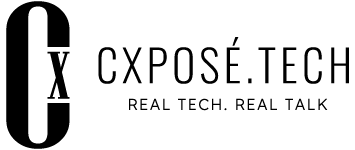 Elena Sanchez, Head of Marketing ASIA, at Gentrack
Elena Sanchez, Head of Marketing ASIA, at Gentrack
AI in marketing is a double-edged sword: it can either enhance value or raise doubts, depending on how it’s presented.
Doubts arise because AI is still largely experimental, and many consumers remain skeptical. There’s no formal certification or verification process for AI, which contributes to this lack of trust. The typical consumer’s first encounter with AI is often through a website chat bot, which, more often than not, leads to frustration rather than resolution. These bots are often limited to handling basic FAQs, and when they fall short, leaving a negative impression.
Additionally, anyone who has used generative AI tools like ChatGPT or Gemini can attest that while they are impressive, they’re not infallible. They make mistakes, have gaps in their knowledge, and can’t be fully trusted. So, claiming that a product uses AI might indeed backfire unless it’s clearly communicated that the technology is reliable, tested, and secure, especially with data protection being a major concern for consumers.
On the other hand, AI adds significant value when it is properly explained, tested, and backed by a reputable brand. In my experience with marketing enterprise software in Asia, AI and machine learning have become nearly indispensable. When integrated into software solutions, AI can automate tasks, provide pre-written emails for customization, or predict user behavior, such as forecasting electricity consumption, all of which make life easier and improve both customer and employee satisfaction.
The key difference here is that enterprise software sales involve a longer sales cycle, including customized demos and in-depth explanations. This process allows buyers to understand and appreciate the value of AI, ultimately transforming it from a potential risk into a must-have feature.
User Delight and Consumer Apprehension
There are certain categories of products that really benefit from AI. For example, enterprise or consumer software. In this case, users will benefit from the AI tools inbuilt in the software such as Canva or use an AI mobile app to play with it and become a cartoon.
However, any traditional product where we don’t understand how AI is used, might have a negative connotation that might lead buyers to feel like a guinea pig and think this is “experimental, not tested and might be wrong”.
The Key to Turning Skeptics into Believers
When mentioning AI in marketing materials, my advice would be to clearly and visually explain with examples what does that mean, how does AI add value and at the same time, address all the concerns around data protection/security that users might have.
Balancing Act: Blending 25% AI with 75% Human Insight
Currently, approximately 25% of our marketing initiatives incorporate AI. I leverage AI extensively in our day-to-day operations to optimize time, automate tasks, and free up resources for more strategic activities. AI tools play a crucial role in various aspects of our campaigns, from market research and content creation to proposing text copy. In the past, I’ve also successfully utilized automated bots for nurturing campaigns.
However, the majority of our strategy, around 75%, is driven by human insight, experience and hard work. While AI serves as an invaluable tool that enhances efficiency and effectiveness, it doesn’t dictate our marketing strategy. Instead, we use AI to complement our human decision-making, adding some speed and creativity into our day to day.

 Thomas Been, Chief Marketing Officer, Domino Data Lab
Thomas Been, Chief Marketing Officer, Domino Data Lab Smita Gupta, Founder & CEO, SG Growth Advisory
Smita Gupta, Founder & CEO, SG Growth Advisory Elena Sanchez, Head of Marketing ASIA, at Gentrack
Elena Sanchez, Head of Marketing ASIA, at Gentrack


